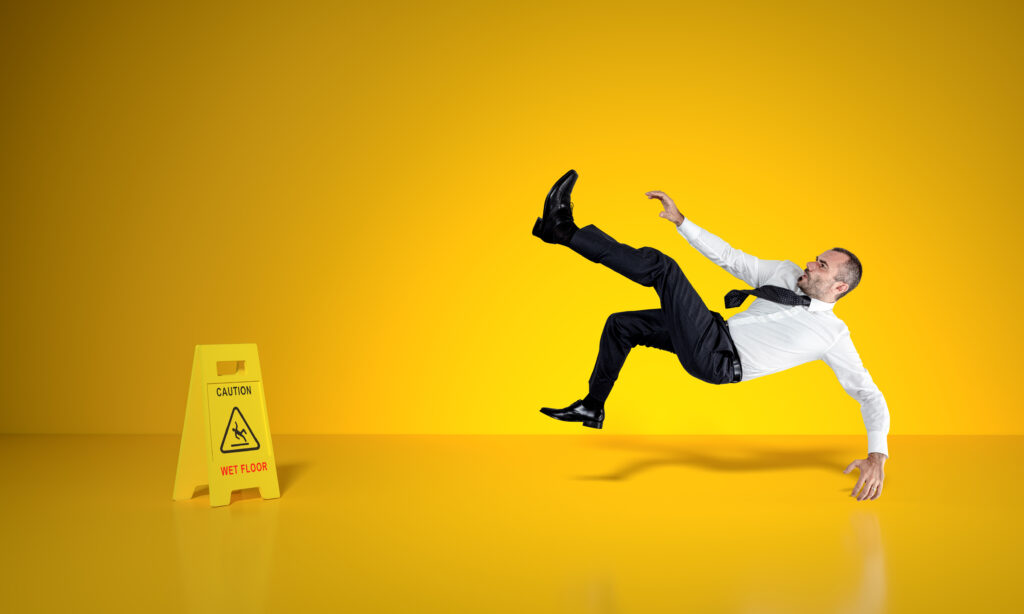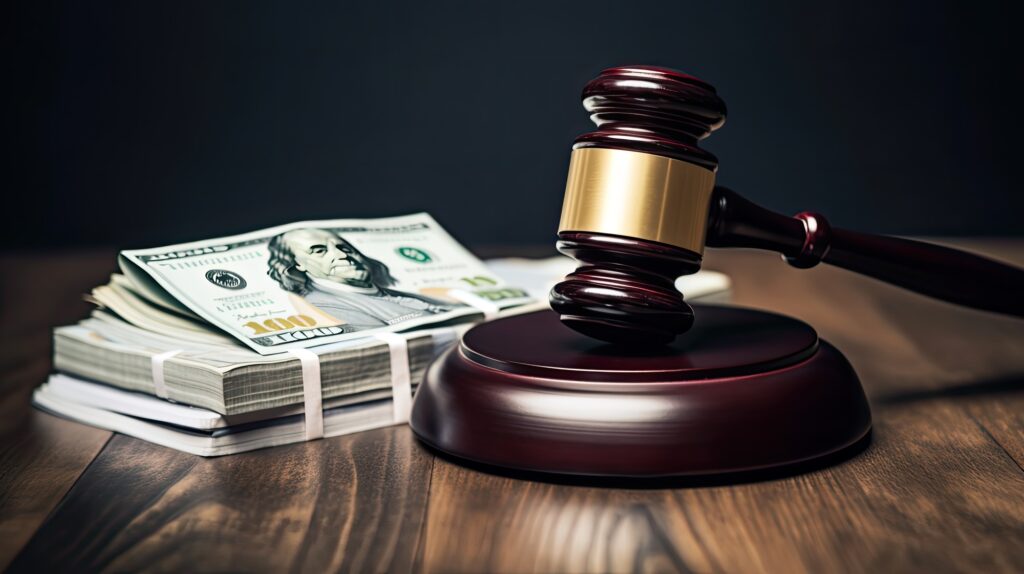From Slip To Settlement: Navigating The Legal Process For Slip And Fall Injuries
Slip and fall accidents are more common than you might think. Every year, thousands of individuals in the U.S. face these unexpected incidents. While some may result in minor injuries, others can have serious, long-term consequences.

Navigating the legal journey after such an accident can be complex and overwhelming. It’s essential to understand your rights and the steps you need to take. This article will guide you through the legal maze from the moment of the slip to the final settlement.
Understanding Slip And Fall Injuries
Slip and fall accidents refer to situations where a person loses their footing and falls due to an unsafe condition on someone else’s property. Such incidents can take place in any location, commonly resulting from factors like slippery floors, irregular surfaces, inadequate lighting, or obstructions in passageways. Such accidents are not limited to public spaces. They can happen in private residences too.
When it comes to injuries resulting from these accidents, the range can be quite broad:
- Sprains And Strains: Often affecting ankles and wrists, these injuries can result from trying to catch oneself during a fall.
- Fractures: Particularly common in older adults, bones can break during a fall, with hip fractures being among the most serious.
- Head Injuries: Depending on the intensity of the fall, the severity of head injuries may vary, from slight concussions to serious traumatic brain injuries.
- Back And Spinal Injuries: Falls can lead to herniated discs, fractured vertebrae, or even chronic back pain.
- Cuts And Bruises: Sharp objects or rough surfaces can cause lacerations and bruising during a fall.
It’s important to recognize the potential severity of these injuries. They can cause immediate pain and discomfort, potentially leading to long-term health issues. Understanding these risks is the first step in taking appropriate action after this type of accident.
Seeking immediate medical attention is a must address and manage any spinal injuries properly. Consulting with a New Jersey spine specialist can ensure you receive a thorough evaluation and appropriate treatment plan tailored to your specific condition. Early intervention by a specialist can significantly improve recovery outcomes and help prevent long-term complications.
Immediate Steps After A Slip And Fall Injury
Right after the accident, the measures you take can greatly influence the outcome of any legal proceedings. It’s important to remain calm and follow specific steps to safeguard your health and legal interests.
- Seek Medical Attention: Immediately get a medical check-up, even for minor injuries. This step ensures your health and safety while providing essential medical records for any legal claim.
- Document The Accident And Injury: Take photos of the fall site and note down details like the time, weather, and any witnesses. Quick documentation helps capture important accident specifics.
- Report The Incident: Report the fall to the management of the business or public place where it occurred. Request a copy of the incident report they create, as it’s a vital piece of evidence.
After taking these initial steps, it’s important to keep in mind the legal considerations. Safeguard all related documents, such as medical records and correspondence. These early actions are foundational for any legal claims you might pursue later.
A slip and fall lawyer provides invaluable guidance on navigating the complexities of personal injury law. They will help ensure that all necessary documents are filed and within the statute of limitations, maximizing your chances of a successful claim.
Legal Framework Governing Slip And Fall Claims
Slip and fall claims are a significant part of premises liability law, which requires property owners to maintain a safe environment. This responsibility extends to businesses, public spaces, and private residences. Navigating these laws can be complex, and consulting a Hartford personal injury attorney can provide the necessary expertise and guidance to effectively handle your case.
The principle of negligence is central to these claims. To prove negligence, it must be shown that the property owner was aware, or should have been aware, of a hazard and failed to address it, leading directly to your injury. The specifics, however, may vary as different states have their own laws regarding premises liability.
The Role Of Evidence In Slip And Fall Injuries
The collection and presentation of evidence are vital to substantiating your claim. Consider these key types of evidence:
- Photographs And Videos: Capture the accident scene and the hazardous condition, such as uneven or wet surfaces. Ensure these are time-stamped for validity.
- Witness Statements: Collect contact details and, if possible, written accounts from anyone who witnessed the fall. These provide an objective view of the incident.
- Accident Reports: If the fall occurred at a business or public place, it’s important to obtain the accident report. This document provides a formal record of what happened.
- Medical Records: Document your injuries and treatments. These records are crucial for linking the fall to your injuries and quantifying damages.
- Surveillance Footage: Request any available surveillance footage of the accident. This can be compelling proof showing the fall’s circumstances.
- Maintenance Records: Evidence of property maintenance or neglect, like cleaning or repair logs, can demonstrate negligence.
Furthermore, the preservation of evidence is critical. They prove the occurrence of the accident and establish the property owner’s negligence and the impact of your injuries.
Determining Liability And Proving Fault
In slip and fall injuries, the following factors help in establishing liability and proving fault:
- Property Condition: Focus on whether the property was hazardous and if the owner knew or should have known about this but failed to take action.
- Owner’s Duty Of Care: The level of care owed by the property owner varies based on your status on their property. For example, invitees, such as shoppers in a store, are owed a higher duty of care compared to trespassers, who may have fewer rights.
- Personal Conduct: Consider your own actions at the time of the accident, including any possible contributions to the incident.
- Comparative Negligence: Understand how your state’s laws might adjust your compensation if your actions contributed to the accident.
It’s also important to note the statute of limitations in your state, as this determines the timeframe you have to initiate legal proceedings. Each of these aspects plays a significant role in building a strong argument for the property owner’s fault.
Managing Settlements And Insurance Negotiations
Effectively managing settlements and negotiating with insurance companies is crucial in slip and fall injuries. Initial offers from the property owner’s insurance company are often lower than the fair value of your claim. It’s essential to engage in negotiations with a thorough understanding of your claim’s worth, considering all aspects like current and future medical costs, lost wages, and pain and suffering.
Having a lawyer with experience in such cases can be beneficial in accurately assessing your claim’s value and guiding you through the negotiation process. Remember, insurance companies may employ tactics to minimize payouts, such as questioning the severity of injuries or suggesting shared responsibility.
Being prepared to address these tactics is important for achieving a fair settlement. Approach the settlement as a negotiation process, where patience and legal representation can lead to the most favorable outcomes.
Wrapping Up
In conclusion, facing a slip and fall incident requires a clear grasp of legal steps and rights. This guide has covered everything from understanding the severity of your injuries to the intricacies of dealing with insurance companies and settlements. Each element, whether it’s documenting your accident or deciphering liability, plays a critical role in ensuring you get the rightful compensation.

Being proactive and well-informed is key in these scenarios. Consulting with a legal expert not only brings clarity to your situation but also strengthens your position in negotiations. With the right legal guidance and a solid understanding of the process, you can effectively manage these challenges, leading to a fair and satisfactory resolution of your case.

